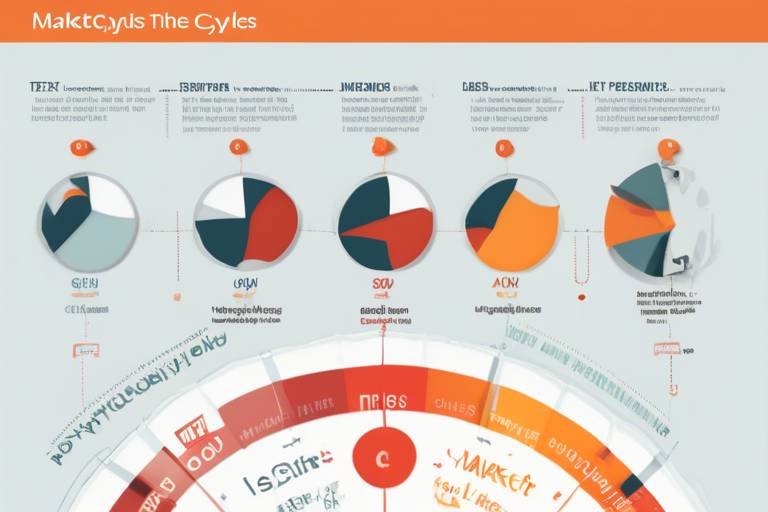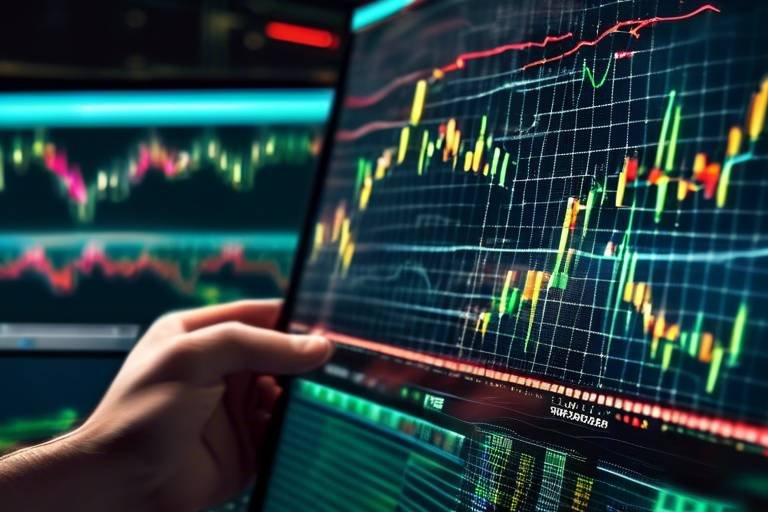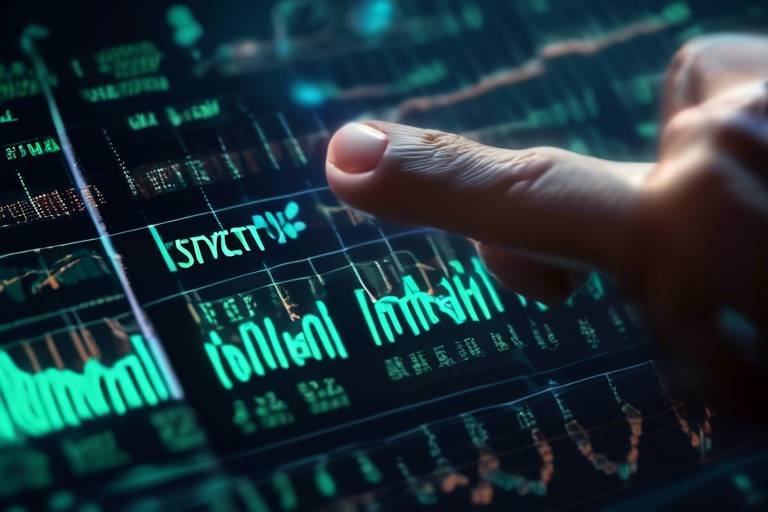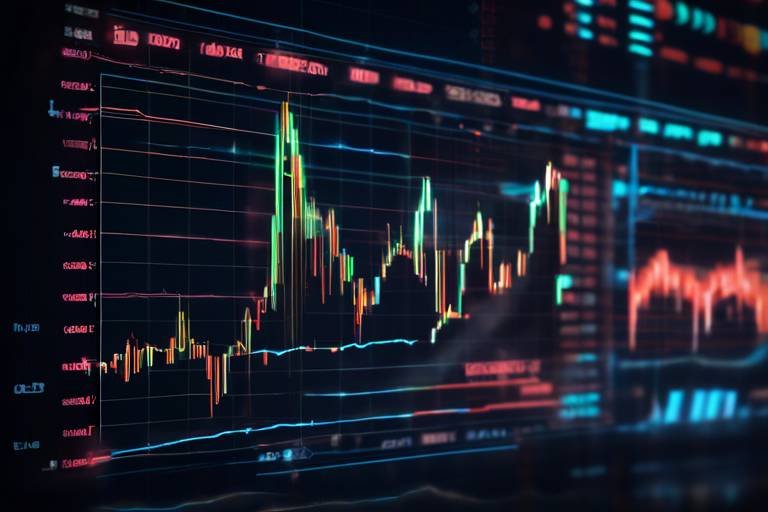The Power of Backtesting in Cryptocurrency Technical Analysis
In the fast-paced world of cryptocurrency trading, where prices can swing wildly within minutes, having a robust strategy is crucial. This is where backtesting comes into play. Imagine you're a chef experimenting with a new recipe. You wouldn’t just throw ingredients together and hope for the best, right? You’d want to test it out, tweak it, and refine it until it's perfect. Backtesting in trading is much the same; it allows traders to evaluate their strategies against historical data to see how they would have performed. This process not only boosts confidence but also enhances decision-making and risk management.
Backtesting serves as a safety net, enabling traders to simulate trades without risking real capital. By analyzing past market conditions and price movements, traders can identify which strategies are likely to succeed and which ones are destined to fail. This is particularly important in the cryptocurrency market, where volatility can lead to significant losses if one is not prepared. It’s like having a crystal ball that shows you how your trading strategy would have performed in the past, allowing you to make informed decisions moving forward.
Furthermore, backtesting is not just about looking at the past; it's about learning from it. Traders can discover the strengths and weaknesses of their strategies, refine their approaches, and ultimately develop a more resilient trading plan. In essence, backtesting is a powerful tool that can elevate a trader's game, turning novice traders into seasoned professionals. So, buckle up as we dive deeper into the significance of backtesting and how it can transform your cryptocurrency trading journey.
Backtesting is a critical process in trading that involves testing a strategy using historical data to evaluate its effectiveness. This section will clarify what backtesting entails and its importance in technical analysis.
Backtesting offers numerous advantages, including risk assessment and strategy refinement. This section will delve into the primary benefits that traders can gain from implementing backtesting in their trading routines.
There are various methods for conducting backtesting, each with unique strengths. This section will outline the most common approaches and how they can be applied to cryptocurrency trading strategies.
The quality of data used in backtesting significantly impacts results. This section will discuss how to select and source reliable historical data to ensure accurate backtesting outcomes.
While backtesting is valuable, it also has limitations that traders must consider. This section will explore common pitfalls and challenges associated with backtesting in cryptocurrency markets.
Transitioning from backtesting to live trading can be complex. This section will cover strategies for effectively integrating backtested strategies into real-time trading environments.
Numerous tools and software options are available for backtesting. This section will review popular platforms and their features, helping traders choose the best option for their needs.
Real-world examples can illustrate the power of backtesting. This section will present case studies showcasing successful backtesting strategies and their outcomes in cryptocurrency trading.
- What is backtesting? Backtesting is the process of testing a trading strategy on historical data to determine its viability.
- Why is backtesting important in cryptocurrency trading? It helps traders evaluate the effectiveness of their strategies, thereby improving decision-making and risk management.
- What are the common pitfalls of backtesting? Some common pitfalls include overfitting, using poor-quality data, and not accounting for market changes.
- Can backtesting guarantee profits? No, while it can provide insights, it cannot guarantee future performance due to market volatility.

Understanding Backtesting
Backtesting is a critical component of trading, particularly in the fast-paced world of cryptocurrency. It involves taking a trading strategy and applying it to historical market data to see how it would have performed in the past. Imagine trying to navigate a ship through treacherous waters without a map; that’s what trading can feel like without backtesting. By simulating trades based on historical data, traders can gain insights into the effectiveness of their strategies, allowing them to make informed decisions before risking real money.
At its core, backtesting serves as a reality check for traders. It answers the all-important question: Would this strategy have worked? This process not only helps in evaluating a strategy's potential profitability but also highlights its strengths and weaknesses. For instance, if a trader uses a moving average crossover strategy, backtesting allows them to analyze how often that strategy would have generated profits during various market conditions.
Moreover, backtesting can be likened to a rehearsal before the big performance. Just as actors practice their lines and blocking to ensure a flawless show, traders can refine their strategies through backtesting. This iterative process enables them to tweak their approaches based on past performance, enhancing their chances of success. By identifying patterns and trends from historical data, traders can develop a more nuanced understanding of market behavior, which is crucial in the volatile cryptocurrency arena.
However, it's essential to approach backtesting with a critical eye. While it can provide a wealth of information, the past is not always a perfect predictor of future performance. Market conditions change, and what worked yesterday might not work today. Therefore, traders should view backtesting as a tool for enhancement rather than a foolproof solution. It's a way to refine strategies, assess risk, and prepare for the unpredictable nature of cryptocurrency trading.
In summary, backtesting is an invaluable process that allows traders to assess the viability of their strategies in a controlled environment. By leveraging historical data, they can make informed decisions, minimize risks, and ultimately enhance their trading performance. As we delve deeper into the benefits and methodologies of backtesting, keep in mind the importance of marrying historical insights with real-time market awareness.

Benefits of Backtesting
Backtesting is like a crystal ball for traders—it allows you to peer into the past and see how your trading strategies would have performed under various market conditions. Imagine being able to test your ideas without risking a single dime! That's the beauty of backtesting. By applying your trading strategies to historical data, you can gain valuable insights into their potential effectiveness. This process not only boosts your confidence but also helps you make informed decisions before diving into real trades.
One of the primary benefits of backtesting is risk assessment. By simulating trades based on historical data, you can identify potential losses and understand how your strategy reacts to different market scenarios. It’s like practicing for a big game; you can refine your approach and prepare for what lies ahead. For instance, if your strategy shows repeated losses during a particular market downturn in the past, you can tweak it to mitigate those risks. This proactive approach is crucial in the volatile world of cryptocurrency trading.
Additionally, backtesting allows for strategy refinement. You may start with a basic idea, but through backtesting, you can discover nuances that can significantly enhance your approach. For example, you might realize that a specific indicator works better in conjunction with another, or that adjusting your entry and exit points could lead to better outcomes. This iterative process helps in honing your strategies, making them more robust and adaptable to real-world trading.
Moreover, backtesting provides a sense of validation. When you see how your strategy performed historically, it can instill a sense of trust in your methods. It’s one thing to believe in your strategy, but it’s another to have data backing it up. Knowing that your approach has yielded positive results in the past can motivate you to stick with it, especially during those inevitable tough trading days. The psychological aspect of trading is often overlooked, but having a solid foundation can make all the difference.
Lastly, backtesting can save you time and money. Instead of jumping headfirst into trades that could lead to losses, you can take the time to analyze and optimize your strategies beforehand. This not only reduces your risk exposure but also allows you to focus on strategies that have a higher likelihood of success. Think of it as a rehearsal before the big performance; the more you practice, the better you will be when it’s showtime.
In summary, the benefits of backtesting are multifaceted. It enhances your risk management, refines your strategies, provides validation, and ultimately saves you both time and money. By embracing backtesting, you position yourself to navigate the unpredictable waters of cryptocurrency trading with greater confidence and skill.

Common Backtesting Methods
When it comes to backtesting in cryptocurrency trading, there are several methods that traders can use to evaluate their strategies. Each method has its own strengths and weaknesses, making it crucial to choose the right one that aligns with your trading goals. Let's dive into some of the most common backtesting methods that can help you refine your trading strategy and make informed decisions.
One of the most popular backtesting methods is the Walk-Forward Optimization. This technique involves dividing historical data into segments, where traders test their strategies on one segment and then validate them on the next. Think of it as a relay race; each runner (or segment) hands off the baton to the next, ensuring that your strategy is not just effective in hindsight but also adaptable to changing market conditions. This method helps in identifying strategies that can withstand the test of time and market volatility.
Another widely used approach is the Monte Carlo Simulation. This method takes a more statistical angle by running thousands of simulations based on random inputs derived from historical data. Imagine tossing a coin multiple times to see how many heads or tails you get; similarly, Monte Carlo simulations help traders understand the range of potential outcomes for their strategies. By analyzing these outcomes, traders can assess the probability of various results and better manage their risk.
Then we have the Fixed Rule Backtesting method. This straightforward approach involves applying a specific set of trading rules to historical data and observing how the strategy would have performed. It’s akin to following a recipe; if you stick to the instructions, you can expect a certain outcome. While this method is simple and easy to implement, it may lack the flexibility needed to adapt to rapidly changing crypto markets.
Lastly, let’s not forget about Visual Backtesting. This method allows traders to manually simulate trades on historical charts, giving them a visual representation of how their strategies would have performed. It’s like watching a re-run of your favorite movie, where you can pause and analyze each scene. While it can be time-consuming, visual backtesting provides valuable insights into market behavior and helps traders develop a more intuitive understanding of their strategies.
In summary, the choice of backtesting method can significantly impact your trading performance. Whether you opt for Walk-Forward Optimization, Monte Carlo Simulation, Fixed Rule Backtesting, or Visual Backtesting, each method offers unique advantages that can enhance your trading strategy. It’s essential to experiment with these methods and find the one that suits your trading style best. After all, in the world of cryptocurrency trading, knowledge is power, and the more you know about your strategies, the better equipped you’ll be to navigate the turbulent waters of the market.
- What is backtesting? Backtesting is the process of testing a trading strategy using historical data to evaluate its effectiveness.
- Why is backtesting important? It helps traders understand how their strategies would have performed in the past, allowing for better decision-making and risk management.
- Can backtesting guarantee future success? No, while backtesting provides valuable insights, it cannot predict future market conditions or guarantee success.
- What data is needed for backtesting? Reliable historical price data is essential for accurate backtesting outcomes.
- Is backtesting time-consuming? It can be, especially if using manual methods, but automated tools can streamline the process significantly.

Choosing the Right Data
When it comes to backtesting your cryptocurrency trading strategies, the quality of data you choose can make all the difference. Imagine trying to bake a cake with expired ingredients; the result is bound to be a disaster! Similarly, using unreliable or inaccurate historical data can lead to flawed backtesting results, which in turn can mislead your trading decisions. So, how do you ensure that the data you use is not only reliable but also relevant to your trading strategy?
First and foremost, you need to identify the type of data that aligns with your trading goals. Are you focusing on price action, volume, or perhaps a combination of both? Historical price data is crucial, but it’s equally important to consider other factors like market sentiment and news events that could have influenced prices in the past. This comprehensive approach allows for a more nuanced analysis, helping you to understand the market dynamics better.
Next, consider the source of your data. In the world of cryptocurrency, there are numerous platforms that provide historical data, but not all are created equal. Here are some key factors to evaluate when choosing a data source:
- Reputation: Look for established platforms that are known for their accuracy and reliability.
- Granularity: Ensure that the data granularity (e.g., minute, hourly, daily) matches your trading strategy.
- Coverage: The data should cover a wide range of cryptocurrencies and trading pairs to give you a holistic view.
- Data Format: Check if the data is available in a format that is easy to integrate with your backtesting tools.
Moreover, it's essential to verify the data's integrity. This means checking for missing values, outliers, or any inconsistencies that could skew your results. A simple way to do this is by visualizing the data through charts or graphs. If something looks off, it probably is! For example, if you notice a sudden spike in price that doesn’t correlate with any historical news events, it might be worth investigating further.
Another critical aspect to consider is the time frame of the data. The cryptocurrency market is notoriously volatile, and strategies that worked well in a bull market may not perform the same way in a bear market. Therefore, it's advisable to use data from different market conditions to test the robustness of your strategy. This way, you can gauge how your strategy would have performed across various scenarios, giving you a better understanding of its potential effectiveness in real-time trading.
Finally, remember that data is not static. The cryptocurrency market is constantly evolving, and so should your data sources. Regularly updating your historical data will ensure that your backtesting remains relevant and accurate. In essence, choosing the right data is not just about finding the right numbers; it's about creating a solid foundation for your trading strategy, enabling you to make informed decisions.

Limitations of Backtesting
While backtesting is an invaluable tool for traders, it’s essential to recognize that it comes with its own set of limitations. Understanding these limitations can help you avoid common pitfalls and make more informed trading decisions. One major limitation is data quality. If the historical data used for backtesting is inaccurate or incomplete, the results can be misleading. For instance, using data that doesn't account for market conditions, such as liquidity issues or slippage, can lead to overly optimistic performance metrics. It's crucial to ensure that the data you are using is not only comprehensive but also reflective of real market conditions.
Another significant limitation is the overfitting of strategies. Traders often fall into the trap of tweaking their strategies to perform exceptionally well on historical data. While this may yield impressive results in backtesting, these strategies may fail miserably in live trading environments. This phenomenon occurs because the strategy is tailored too closely to past data, making it less adaptable to future market conditions. Think of it like trying to fit a square peg into a round hole; just because it fits perfectly in one scenario doesn’t mean it will work in another.
Moreover, backtesting does not account for changing market dynamics. The cryptocurrency market is notoriously volatile, and what worked yesterday may not work tomorrow. Factors such as regulatory changes, technological advancements, and shifts in market sentiment can dramatically alter the landscape. Therefore, relying solely on backtested results without considering current market trends can lead to poor decision-making.
Additionally, backtesting often assumes that trading conditions remain constant, which is rarely the case in real-world scenarios. For example, backtesting might not factor in the impact of large trades on market prices or the psychological factors that can influence trader behavior during periods of high volatility. This disconnect can lead to unrealistic expectations about the performance of a trading strategy.
Lastly, a common oversight in backtesting is the lack of proper risk management. Many traders focus solely on maximizing returns without adequately assessing the potential risks involved. This oversight can lead to significant losses when the market moves against them. Implementing sound risk management practices, such as setting stop-loss orders and diversifying trades, is crucial for ensuring long-term success.
In summary, while backtesting is a powerful tool that can enhance trading strategies, it’s essential to approach it with a critical eye. By being aware of its limitations—such as data quality, overfitting, changing market dynamics, unrealistic trading conditions, and inadequate risk management—traders can better prepare themselves for the unpredictable nature of cryptocurrency markets.
- What is the most significant limitation of backtesting? The most significant limitation is the quality of data used, which can lead to misleading results if it's inaccurate or incomplete.
- Can overfitting be avoided? Yes, overfitting can be avoided by ensuring that strategies are robust and adaptable to changing market conditions rather than tailored too closely to historical data.
- How should I manage risks when backtesting? Incorporate sound risk management practices such as setting stop-loss orders and diversifying your portfolio to mitigate potential losses.
- Is backtesting useful for all traders? While backtesting can be beneficial for many traders, it's crucial to understand its limitations and use it as one part of a comprehensive trading strategy.

Integrating Backtesting with Live Trading
Transitioning from backtesting to live trading can feel like jumping off a diving board into the deep end—exciting yet daunting! Backtesting allows traders to evaluate their strategies using historical data, but when it comes to real-time trading, the stakes are much higher. Understanding how to effectively integrate backtested strategies into live trading environments is crucial for success. It’s not just about having a good strategy on paper; it’s about adapting to the unpredictable nature of the market.
One of the first steps in this integration process is to establish a clear plan. This plan should outline how you will implement your backtested strategies in real-time. Here are a few key considerations:
- Risk Management: Define your risk tolerance and stick to it. This includes setting stop-loss orders and determining how much of your capital you are willing to risk on each trade.
- Position Sizing: Decide how large your trades will be based on your backtesting results. A common mistake is to over-leverage based on past performance, which can lead to significant losses.
- Market Conditions: Remember that past performance does not guarantee future results. Always assess the current market conditions and be ready to adjust your strategy accordingly.
Moreover, it’s essential to start small. When you first implement your backtested strategies in live trading, consider using a smaller portion of your capital. This approach allows you to gain valuable experience without exposing yourself to excessive risk. Think of it as dipping your toes in the water before taking the plunge. As you gain confidence and see positive results, you can gradually increase your position sizes.
Another critical aspect is to maintain a trading journal. Documenting your trades, including the rationale behind each decision, can provide insights into your trading behavior and help you refine your strategies over time. It’s like having a personal coach that reviews your performance and offers constructive feedback. Additionally, reviewing this journal regularly can help you identify patterns in your trading that may not be apparent at first glance.
Lastly, stay adaptable. The markets are constantly changing, and what worked during backtesting may not always work in live trading. Be prepared to tweak your strategies based on real-time feedback. This flexibility is akin to being a skilled surfer who adjusts their stance based on the waves they encounter. Embrace the learning curve, and don't be afraid to pivot if necessary.
In summary, integrating backtesting with live trading requires a well-thought-out approach that includes clear planning, risk management, starting small, maintaining a trading journal, and staying adaptable. By following these guidelines, you can enhance your chances of success and navigate the complexities of the cryptocurrency trading landscape with greater confidence.
Q1: What is backtesting?
A: Backtesting is the process of testing a trading strategy using historical data to determine its viability and effectiveness before applying it in real-time trading.
Q2: Why is integrating backtesting with live trading important?
A: Integration is crucial because it allows traders to apply validated strategies in a real-world context, enhancing decision-making and risk management.
Q3: How can I ensure my backtested strategy performs well in live trading?
A: By establishing a clear plan, starting small, and continuously adapting your strategy based on market conditions, you can improve the chances of success.

Tools and Software for Backtesting
When it comes to backtesting in cryptocurrency trading, having the right tools and software can make all the difference. Imagine trying to navigate a maze without a map; that’s what backtesting is like without the proper resources. The landscape of cryptocurrency is ever-evolving, and traders need to stay ahead of the curve by utilizing advanced technologies designed for this purpose. Fortunately, there are numerous platforms available that cater specifically to the needs of traders who wish to test their strategies against historical data.
One of the most popular tools for backtesting is TradingView. This platform offers a user-friendly interface and a powerful scripting language called Pine Script, which allows traders to create custom indicators and strategies. With TradingView, you can easily visualize your backtesting results, making it simpler to analyze how your strategies would have performed in the past. It’s like having a personal assistant that highlights the best routes to take in your trading journey.
Another noteworthy option is MetaTrader 4 (MT4) and its successor MetaTrader 5 (MT5). These platforms are widely recognized in the trading community for their robust backtesting capabilities. They provide a built-in strategy tester that allows you to simulate trades using historical data. The detailed reports generated by MT4/MT5 can help you assess the profitability and risk factors of your strategies. However, it’s essential to note that while these platforms are powerful, they may require a bit of a learning curve for beginners.
For those who prefer a more code-oriented approach, Python has become a favorite among data scientists and traders alike. With libraries like Pandas and Backtrader, you can create sophisticated backtesting frameworks tailored to your specific needs. This flexibility allows for extensive customization, making it easier to implement complex trading strategies. However, it’s worth mentioning that this option is best suited for those who are comfortable with programming.
Additionally, there are specialized backtesting platforms like QuantConnect and Amibroker. These tools offer a range of features, from cloud-based backtesting to multi-asset strategy testing. They provide traders with the ability to backtest their strategies across different markets, which is crucial in the highly volatile world of cryptocurrency. By utilizing these platforms, traders can gain insights into how their strategies would perform under various market conditions.
To sum it up, the choice of backtesting tools and software can significantly influence your trading success. Whether you prefer a user-friendly interface like TradingView, a robust platform like MetaTrader, or a customizable coding approach with Python, each option has its strengths. It's essential to evaluate your own trading style and technical proficiency to select the tool that best fits your needs. Remember, the right tool is not just a luxury; it’s a necessity in the fast-paced world of cryptocurrency trading.
- What is backtesting? Backtesting is the process of testing a trading strategy using historical data to determine its effectiveness.
- Why is backtesting important? Backtesting helps traders assess the viability of their strategies and refine them based on past performance.
- Can I backtest cryptocurrency strategies on any trading platform? Not all platforms offer backtesting capabilities; it’s essential to choose one that does.
- What should I look for in a backtesting tool? Look for features like ease of use, customization options, and the ability to analyze results effectively.

Case Studies of Successful Backtesting
When it comes to the world of cryptocurrency trading, backtesting can be the golden ticket to success. Let’s dive into some compelling case studies that highlight how traders have leveraged backtesting to refine their strategies and achieve impressive results. Imagine a trader named Alex, who was initially struggling with his trading decisions. After implementing a backtesting strategy using historical price data, he was able to identify patterns and refine his approach, leading to a significant increase in his profitability.
One notable case is that of a trading algorithm developed by a group of data scientists. They focused on a strategy that utilized moving averages to predict price movements. By backtesting their algorithm against several years of Bitcoin price data, they were able to fine-tune their parameters. The results were astonishing: their backtested strategy yielded a return of over 300% in a simulated environment. This success prompted them to transition to live trading, where they continued to see positive results, proving that backtesting can bridge the gap between theory and practice.
Another fascinating example involves a trader who specialized in altcoins. By backtesting various indicators, such as the Relative Strength Index (RSI) and Bollinger Bands, he discovered that certain combinations of these indicators significantly improved his win rate. Over a span of six months, his backtested strategies showed a consistent profit margin of around 40%. This trader not only honed his skills but also developed a robust trading plan that he could confidently execute in real-time markets.
These case studies illustrate a critical point: backtesting is not just a theoretical exercise; it’s a powerful tool that can lead to tangible results. However, it’s essential to remember that successful backtesting requires a meticulous approach. Traders must ensure they are using high-quality data and appropriate methodologies to avoid falling into the trap of overfitting their models to past data.
To further emphasize the importance of backtesting, let’s take a look at a summary table of key insights drawn from these case studies:
| Trader | Strategy | Backtested Return | Key Indicators |
|---|---|---|---|
| Alex | Pattern Recognition | Significant Increase | N/A |
| Data Scientists | Moving Averages | 300% | Moving Averages |
| Altcoin Trader | Indicator Combination | 40% Profit Margin | RSI, Bollinger Bands |
In conclusion, these case studies serve as a testament to the efficacy of backtesting in cryptocurrency trading. By examining past data and refining their strategies, traders can enhance their decision-making and risk management. The key takeaway is that backtesting is not merely a step in the trading process; it can be the cornerstone of a successful trading strategy. Are you ready to embark on your backtesting journey?
- What is backtesting? Backtesting is the process of testing a trading strategy using historical data to see how it would have performed.
- Why is backtesting important? It helps traders assess the viability of their strategies and refine them based on past performance.
- What data should I use for backtesting? High-quality historical price data is essential for accurate backtesting results.
- Can backtesting guarantee future success? While it can provide insights, it does not guarantee future performance due to market volatility.
- What tools are available for backtesting? There are several platforms and software options, including TradingView, MetaTrader, and specialized backtesting software.
Frequently Asked Questions
-
What is backtesting in cryptocurrency trading?
Backtesting is the process of testing a trading strategy using historical data to see how it would have performed in the past. By simulating trades based on previous market conditions, traders can evaluate the effectiveness of their strategies before risking real money.
-
Why is backtesting important?
Backtesting is crucial because it allows traders to assess the viability of their strategies without financial risk. It helps in identifying strengths and weaknesses, refining approaches, and making data-driven decisions that can enhance trading performance.
-
What are the benefits of backtesting?
Some key benefits of backtesting include improved risk management, better strategy development, and increased confidence in trading decisions. By understanding how a strategy would have fared in the past, traders can make more informed choices moving forward.
-
What methods can be used for backtesting?
Common backtesting methods include simple historical simulations, walk-forward testing, and Monte Carlo simulations. Each method has its own strengths and can be applied differently depending on the trader's goals and the complexity of the strategy.
-
How do I choose the right data for backtesting?
Selecting high-quality historical data is essential for accurate backtesting. Traders should look for data that is comprehensive, reliable, and relevant to the specific cryptocurrency being analyzed. It's also important to consider the time frame and frequency of the data.
-
What are the limitations of backtesting?
While backtesting is a valuable tool, it has limitations such as overfitting, reliance on historical data that may not predict future performance, and the inability to account for market changes. Traders must be aware of these pitfalls to avoid false confidence in their strategies.
-
How can I integrate backtested strategies into live trading?
Integrating backtested strategies into live trading requires careful planning. Traders should start with smaller positions, monitor performance closely, and be ready to adapt their strategies based on real-time market conditions. Gradually scaling up can also help manage risk.
-
What tools are available for backtesting?
There are numerous tools and software options for backtesting, including platforms like TradingView, MetaTrader, and specialized backtesting software. Each tool offers different features, so traders should choose one that aligns with their specific needs and trading style.
-
Can you provide examples of successful backtesting?
Yes! Many traders have documented their success stories through backtesting. For instance, a trader might have tested a moving average crossover strategy that showed consistent profits over several years, providing a solid foundation for their live trading approach.



















